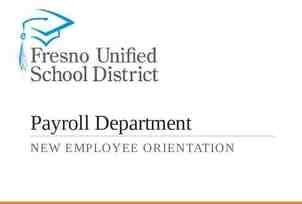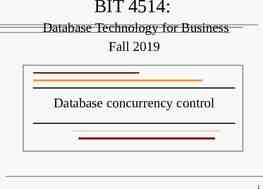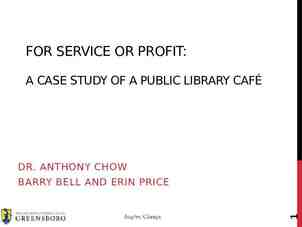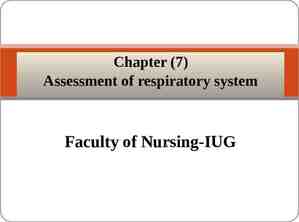Multiple Choice Tutorial Chapter 20 International Finance 1
39 Slides187.50 KB

Multiple Choice Tutorial Chapter 20 International Finance 1

1. The exchange rate is the a. total yearly amount of money changed from one country’s currency to another country’s currency b. total monetary value of exports minus imports c. amount of country’s currency which can exchanged for one ounce of gold d. price of one country’s currency in terms of another country’s currency D. If one American dollar is worth two French francs, the exchange rate is two to one. 2

2. The balance of payments summarizes the transactions that occur during a given time period between a. the government of one country and the government of another country b. the national government and local governments in the same country c. individuals, firms, and government of one country and individuals, firms, and governments throughout the rest of the world C. The balance of payments is the measure of all money coming into a country as compared to the total flow of money out of the country. 3

3. Which of the following is not included in the balance of payments? a. final consumer goods exported to another country. b. tourism on the part of people from other countries. c. financial transactions such as U.S. firms purchasing foreign assets to achieve a higher rate of return. d. increased money supply by the Federal Reserve in the United States. D. The balance of payments involves the flow of money in and out of the country. The Fed increasing the money supply has nothing to 4 do with international trade.

4. The balance of payments is a a. flow variable measuring only transactions which involve payments of money b. flow variable measuring all economic transactions, even if no exchange of money occurs c. flow variable which is in equilibrium only when exports equal imports B. The balance of payments measures all money flows, not just those dealing with imports and exports. If the total amount of dollar transactions was equal in terms of a country’s debits and credits, no money need change hands. 5

5. The value of a country’s exports is listed in its balance of payments account as a(an) a. credit b. debit c. payment d. investment A. An export is considered a credit because exported goods and services bring money into a country. 6

6. The merchandise trade balance a. reflects trade in intangibles such as insurance and tourism b. includes personal gifts to friends abroad c. records the flow of financial assets such as stocks and bonds d. equals the value of tangible products exported minus the value of tangible products imported D. Whereas the balance of trade involves the flow of money in and out of a country via trade, the merchandise trade balance measures the actual products imported and exported. 7

7. In the balance of payments, services a. are not counted b. include only tangible products c. are always included as a credit d. include income earned from foreign investments D. The income earned on foreign investments do not represent the exchange of a tangible product, therefore, it is considered a service. 8

8. Net exports refers to a. total exports minus total imports b. total imports minus total exports c. exports of merchandise minus imports of merchandise d. total exports of capital minus depreciation A. Exports and imports measure goods and services, not just goods. If exports are greater than imports, a country has positive net exports. More money is entering a country than leaving a country via trade. 9

9. Which of the following is not considered a unilateral transfer? a. foreign aid from one government to another b. income earned from foreign investments c. personal gifts to friends in foreign countries d. donations to foreign countries from nongovernment domestic charities B. A unilateral transfer occurs when there is an actual exchange of a good or service between two countries. This is not happening when income is made from a foreign investment. 10

10. United States net unilateral transfers have been a. positive every year since 1950 b. negative every year since 1950 c. positive every year since 1950 except 1991, during the Persian Gulf War d. negative every year since 1950 except 1991, during the Persian Gulf War D. Unilateral trade transfers involves the gifts and grants received from abroad by residents of a country minus the unilateral trade transfers residents send abroad. 11

11. When net unilateral transfers are added to the net exports of goods and services, the result is called the a. merchandise trade balance b. official reserve transactions account c. balance of payments d. balance on current account D. Exports and imports involves the exchanging of money for goods and services. A unilateral trade transfer does not involve money, the goods are simply given to without receiving money in turn. Both together are called the balance on current 12 account.

12. The capital account records international transaction involving a. all of the following b. intangible commodities like transportation and tourism c. the flow of financial assets such as borrowing or lending d. unilateral transfers C. Financial capital is the money used to purchase capital, (buildings, machines and tools). Because all money invested in capital has to come from savings, capital accounts refer to financial assets. 13

13. In the balance of payments, a net inflow of capital shows up as a a. surplus in the capital account b. deficit in the capital account c. surplus in the current account d. deficit in the current account A. Capital in this sense means financial capital. When more money enters a country then leaves the country, there is a surplus in the capital account. 14

14. The world’s largest net debtor nation is a. Russia b. China c. Brazil d. The United States D. The United States used to be the world’s largest creditor nation, that is, foreigners owed us more then we owed them. However, in recent years we have become the world’s largest debtor nation, which means that overall, we owe foreigners more than they owe us. This is due to a large increase in our national debt, of which about 17% is owned by foreigners. 15

15. The net amount of gold, major currencies, and SDRs (Special Drawing Rights) that shift among central banks to settle international transactions is known as the a. net foreign investment b. capital account balance c. currency appreciation d. official reserve transactions account D. The IMF (International Monetary Fund) now issues paper substitutes for gold called Special Drawing Rights (SDRs) which function as international reserves. The value of a unit of SDR is a weighed average of the values of the major national currencies. 16

16. The statistical discrepancy a. is always positive b. is always negative c. must be reduced to zero and eliminated from the balance of payments before the records become official d. is a residual factor which indicates the net error in the balance of payments data D. Regardless of how sophisticated we become in doing statistical analysis, there will always be errors made. Therefore, it is necessary to factor into the equation an estimate of that perceived error. 17

17. If a country runs a deficit in its current account, it is because a. exports exceed imports b. imports exceed exports c. net unilateral transfers are negative d. foreign currency received from exports and transfers is less than the foreign exchange needed to pay for imports and to make unilateral transfers D. Current account includes all transactions in currently produced goods and services plus net unilateral transfers. It can be negative, reflecting a current account deficit; positive, reflecting a current account surplus; or zero. 18

18. Exchange rates a. are always fixed b. fluctuate to equate the quantity of foreign exchange demanded with the quantity supplied c. fluctuate to equate imports and exports d. fluctuate to equate rates of interest in various countries B. The value of a major country’s currency is determined by the supply and demand of that currency on the world market. If the demand is greater than the quantity supplied, the value will increase; if the demand is less than the quantity supplied, the value of the currency will decline on the world market. 19

19. If the U.S. dollar appreciates relative to the British pound, a. it will take fewer dollars to purchase a pound b. it will take more dollars to purchase a pound c. it is called a weakening of the dollar A. The term appreciate means that something becomes more valuable; the term depreciate, means something is worth less than previously. If the dollar becomes more valuable in relation to the British pound, it will take fewer dollars when exchanging these two currencies. 20

20. If the U.S. dollar depreciated relative to the British pound, a. British products are cheaper to import to the U.S. b. British products are more expensive to import to the U.S. c. the price of imported British products does not change B. If it takes more dollars to exchange for British pounds than used to be the case, British products will become more expensive to Americans because when exchanging dollars for pounds, fewer dollars will be received. This is because a country’s products can only be bought with that country’s currency. 21

21. Which of the following is a reason that residents of other countries desire to acquire dollars? a. foreigners need dollars to purchase U.S. goods and services b. dollars can be used as a safe way of storing value when the foreigner’s own currency is unstable c. dollars are often accepted as an international medium of exchange d. all of the above D. Dollars are needed to buy goods and services in America, the dollar is more stable than most currencies, and the dollar is a standard currency for international trade. 22

22. Assume the United States has only one trading partner. The U.S. demand curve for foreign currency is drawn while holding constant all of the following factors except a. incomes of U.S. consumers b. the exchange rate c. the expected rate of inflation in the U.S. d. the foreign prices of foreign goods B. A county’s exchange rate is the price of one country’s currency measured in terms of another country’s currency. If it takes six French francs to equal one American dollar, then the exchange rate between the two 23 currencies is one to six.

23. Other things constant, as the dollar-perpound exchange rate increases, a. the price of U.S. bonds increases in Britain b. it takes fewer dollars to purchase one pound c. the amount of U.S. bonds demanded by those in Great Britain increases C. Pound is the name of the British currency just as dollar is the name of the U.S. currency. When the value of the pound increases in relation to the value of the dollar, American goods and services become less expensive to the British. One example of a good becoming less expensive is the price of an American bond bought by a Brit. 24

24. An increase in U.S. income which increases American demand for all normal goods (including imports from Britain) will shift a. the U.S. demand curve for foreign exchange to the right, causing an increase in the dollar-per-pound exchange rate b. the U.S. demand curve for foreign exchange to the left, causing a decrease in the dollar-per-pound exchange rate c. the U.S. supply curve for foreign exchange to the right, causing a decrease in the dollarper-pound exchange rate A. In order to buy more goods from Britain, Americans must exchange their dollars for British pounds. As the demand for pounds 25 increases, its value increases.

25. The U.S. dollar will appreciate when a. there is a decrease in the U.S. quantity demanded of foreign exchange b. there is a decrease in the U.S. quantity supplied of foreign exchange c. the U.S. central bank sells dollars to purchase foreign currency A. The value of the American dollar on the world market is determined by the same demand and supply forces that determine the value of anything in the market. In a free market, a lower quantity of a product translates into a higher price for that product. 26

26. An arbitrageur in foreign exchange is a person who a. earns illegal profit by manipulating foreign exchange b. causes differences in exchange rates in different geographic markets c. simultaneously buys large amounts of a currency in one market and sell it in another market C. If you buy one currency with another currency and the value of the currency you bought increases relative to the one you sold, the difference is a net gain for you. If you do this professionally, you are called an arbitrageur. 27

27. A speculator in foreign exchange is a person who a. buys foreign currency, hoping to profit by selling it a a higher exchange rate at some later date b. earns illegal profit by manipulation foreign exchange c. causes differences in exchange rates in different geographic markets A. If a person buys a French franc with American dollars, for example, and then buys American dollars with the French francs at a time when the value of the Franc has increased in relation to the dollar, the person profits from the change in currency28 values.

28. The Purchasing Power Parity (PPP) theory is a good predictor of a. all of the following: b. the long-run tendencies between changes in the price level and the exchange rate of two countries c. interest rate differentials between two countries when there are strong barriers preventing trade between the two countries B. The purchasing power parity theory recognizes that exchange rates between two countries will adjust in the long run to reflect price level differences between two countries. 29

29. According to the Purchasing Power Parity (PPP) theory, a. Exchange rates between two national currencies will adjust daily to reflect price level differences in the two countries b. In the long run, inflation rates in different countries will equalize around the world c. In the long run, the exchange rates between two national currencies will reflect pricelevel differences in the two countries C. If inflation in France is more than the inflation rate in the U.S., then the value of the French franc will decline in relation to the value of the dollar on the international 30 market.

30. According to many studies of internationally traded goods, the U.S. dollar is often a. undervalued relative to the currencies of Canada and Mexico, and overvalued compared to the yen and the mark b. overvalued relative to the currencies of Canada and Mexico, and undervalued compared to the yen and the mark c. overvalued relative to all other currencies B. The dollar may be undervalued in relation to the yen, the franc, and the mark, and the pound, but many other currencies are undervalued relative to the dollar, such as currencies from Australia, Canada, Mexico, and most of the emerging-market and 31 developing economies.

31. A floating exchange rate a. is determined by the national governments involved b. remains extremely stable over long periods of time c. is determined by the actions of central banks d. is allowed to vary according to market forces. D. The word float means that a country’s currency is allowed to fluctuate according to market forces. This is compared to a fixed exchange rate; the situation where the government will try to determine the value of its currency. 32

32. A fixed exchange rate is enforced by a. national governments, who establish appropriate trade barriers for each country with whom they trade b. national governments, who manipulate gold reserves appropriately c. central banks, who buy and sell appropriate currencies C. A country’s central bank can increase the value of its currency on the world market by buying the currency, it can decrease the value on the world market by selling the currency. Buying and selling involves exchanging one currency for the other. 33

33. Devaluation of a domestic currency a. is also called revaluation b. refers to an increase in the floating exchange rate c. refers to an decrease in the floating exchange rate d. refers to an increase in the fixed exchange rate D. When there is an increase in the exchange rate of a country’s currency it means that more of that country’s currency is needed when exchanging for another country’s currency. A country cannot devalue its currency if it is a floating currency. 34

34. The international financial system operated under a gold standard a. from the 1500’s through the present b. from 1879 through the present c. from 1879 to 1914 d. from 1914 to 1939 C. The gold standard is an arrangement whereby the currencies of most countries are convertible into gold at a fixed rate. For example, the U.S. dollar could be redeemed at the U.S. Treasury for one-twentieth of an ounce of gold. The British pound could be redeemed at the British treasury for onefourth of an ounce of gold. Therefore, one pound exchanged for five dollars. 35

35. Under a gold standard, a. a nation’s currency can be traded for gold at a fixed rate b. a nation’s central bank or monetary authority has absolute control over its money supply c. new discoveries of gold have no effect on money supply or prices A. The idea was that if each country knew what its currency was worth in relation to gold, then each country would know what its currency was worth to one another. In turn, this would facilitate international trade. 36

36. The Bretton Woods accord a. of 1879 created the gold standard as the basis of international finance b. of 1914 formulated a new international monetary system after the collapse of the gold standard c. of 1944 formulated a new international monetary system after the collapse of the gold standard C. The new international monetary system was the where all exchange rates were fixed in relation to the American dollar. The U.S. stood ready to convert foreign holding of dollars into gold at a fixed rate of 35 an ounce. 37

37. The current system of international finance is a a. gold standard b. fixed exchange rate system c. floating exchange rate system d. managed float exchange rate system D. The value on the international market of major currencies are basically determined by market forces. However, there are things a country can do to influence the demand or supply of the currency, thus influencing the value of the currency on the world market. 38

END 39






